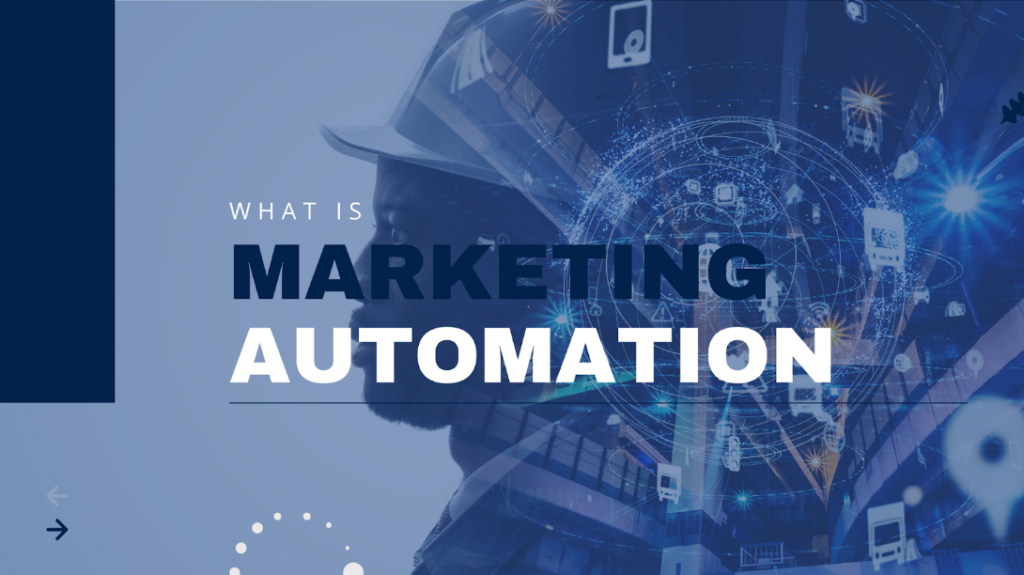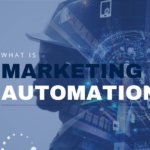What is Marketing Automation?
Marketing automation is a powerful tool that streamlines and enhances marketing efforts by leveraging technology. It allows businesses to send targeted messages to customers across multiple channels, such as email, websites, social media, and SMS. This helps ensure that the right message reaches the right person at the right time, enhancing engagement and conversion rates.
By automating repetitive tasks and nurturing leads more effectively, businesses can improve operational efficiency and boost revenue. Automation enables more precise targeting and follow-ups, leading to higher conversion rates and better use of marketing resources.
It also supports lead generation by capturing and tracking potential customers’ interactions. It provides tools for tracking and analyzing marketing performance. Metrics such as open rates, click-through rates, conversion rates, and overall Return On Investment (ROI) can be measured and assessed to gauge the effectiveness of marketing campaigns and make data-driven decisions.
Key Functions of Marketing Automation
Marketing automation encompasses several key functions that enhance the efficiency and effectiveness of marketing and sales processes. Here are some of the major key functions:
1. Streamlines and Simplifies Time-Consuming Marketing and Sales Responsibilities
Automation helps reduce the manual workload by managing routine tasks such as:
- Sending Emails
- Updating Customer Records
- Scheduling Posts
- Automation of Budgets
- Positioning of Product
This allows marketing and sales teams to focus on strategic activities rather than getting bogged down by repetitive tasks.
2. Automates the Lead Qualification Process
Automation systems can evaluate and score leads based on predefined criteria, such as:
- Engagement Level
- Demographic Information
- Lead Quality Analysis
This process helps prioritize high-potential leads for follow-up, ensuring that sales teams spend their time on the most promising prospects.
3. Creates a Hub for Digital Campaign Creation
Marketing automation platforms are designed to streamline the design, execution, and management of digital campaigns from a centralized location. One of the most powerful features of these platforms is their ability to integrate with ads platforms and third-party tools for backend data, significantly enhancing campaign management and ensuring consistency across different channels.
4. Identifies Audience and Designs Content
Automation tools can segment audiences based on various criteria (e.g., behavior, demographics, interests) and help in crafting personalized content tailored to each segment. This targeted approach enhances engagement and effectiveness of marketing efforts.
5. Automatically Triggers Actions Based on Schedules and Customer Behavior
Automated workflows can trigger specific actions, such as sending follow-up emails, launching drip campaigns, or notifying sales reps, based on predetermined schedules or real-time customer interactions. This ensures timely and relevant communication.
6. Saves Time and Resources
By automating routine tasks and processes, businesses can significantly reduce the time and resources spent on manual work. This efficiency not only cuts operational costs but also improves the overall productivity of the marketing and sales teams.
7. Drives Revenue and ROI
Automation helps optimize marketing efforts by increasing the effectiveness of campaigns, improving lead nurturing, and reducing churn. This leads to higher conversion rates and, consequently, a better ROI for marketing activities.
Maino.ai revolutionizes marketing automation, driving unexpected revenue growth for businesses. With Maino.ai, companies can achieve a 70% faster turnaround on creative projects, reduce manual tasks by 85%, and boost click-through rates by 38%. Experience these transformative results and more with our cutting-edge solutions.
How Marketing Automation Works?
Marketing automation operates through a systematic process that leverages customer data to enhance marketing efforts. Here’s a detailed explanation of how it works:
1. Collection of Customer Data
Marketing automation systems gather data from various touchpoints where customers interact with the brand, such as emails, website visits, app usage, and social media posts.
This data includes behavioral information (e.g., pages visited, content interacted with), demographic details (e.g., age, location), and engagement metrics (e.g., email open rates, social media likes).
2. Streamlines Segmentation and Targeting Processes
The collected data is used to segment the audience into different groups based on shared characteristics or behaviors, such as purchase history or engagement level. These segments enable more precise targeting of marketing messages, ensuring that communications are relevant to each audience group. Automation tools can create and manage these segments dynamically as new data comes in.
3. Delivers Personalized Messaging at Scale
Automation systems can tailor messages based on individual customer profiles and behaviors. This personalization can include using a customer’s name, recommending products based on past behavior, or sending content relevant to their interests. These personalized messages are delivered to large audiences efficiently, ensuring that each recipient receives content that resonates with them without manual intervention.
4. Automated Workflows Triggered by Customer Actions or Schedules
Automated workflows are set up to respond to specific customer actions (e.g., signing up for a newsletter, abandoning a shopping cart) or based on predefined schedules (e.g., sending a follow-up email a week after a purchase). These workflows guide the customer through various stages of engagement, from initial contact through nurturing and conversion. They ensure timely and relevant communication without manual oversight.
MXPlayer tied up with Maino.ai for marketing automation and reached millions of users. With a data-driven approach, they reduced approximately 3x Customer Acquisition Costs (CAC)
Marketing Automation and Your CRM
Integrating marketing automation with your Customer Relationship Management (CRM) system is key to creating a seamless and efficient operation between marketing and sales departments.
The integration ensures that both marketing and sales teams have access to the same customer data and insights. This fosters better collaboration, as both teams can see the same information, understand customer interactions, and align their strategies.
Marketing automation tools and CRM systems working together align the goals and activities of marketing and sales. For example, marketing can track leads’ behavior and then hand off qualified leads to sales with all relevant context and data, ensuring a smoother transition and more effective follow-up.
Benefits of Integrated Platforms
Here are some benefits of these integrated platforms:
- Centralized Data: Integrated platforms consolidate customer data into a single database. This centralization improves data accuracy and accessibility, making it easier to analyze customer behavior and track interactions across various touchpoints.
- Enhanced Personalization: With a unified view of customer data, marketing automation can deliver highly personalized messages based on detailed CRM information, such as past interactions, preferences, and purchase history. This leads to more targeted and effective marketing campaigns.
- Streamlined Processes: Integration automates the synchronization of data between marketing and sales, reducing the need for manual data entry and minimizing errors. This streamlining saves time and ensures that both teams are working with the most up-to-date information.
- Improved Lead Management: Marketing automation can track and nurture leads until they are ready to be handed over to sales. The CRM system then provides sales teams with detailed insights and context about each lead, helping them to prioritize and personalize their outreach.
- Seamless Experience: Integrated systems ensure that customers experience a consistent journey from initial contact through to becoming a customer. Marketing automation can manage initial engagements, while the CRM tracks ongoing interactions and supports post-sale activities, all based on the same customer data.
- Data Continuity: The integration maintains continuity of customer information, so each department has a complete view of the customer’s history and interactions. This consistency supports better decision-making and more coherent customer communication.
- Unified Strategy: By integrating marketing automation with CRM, businesses can develop and execute a unified strategy across both marketing and sales, ensuring a consistent brand message and seamless customer experience throughout the engagement lifecycle.
Having said that, let’s understand more about the benefits of marketing automation.
Marketing Automation Best Practices
Implementing marketing automation effectively involves following best practices that ensure you maximize the benefits and avoid common pitfalls.
1. Define and Present Goals
Clearly define what you want to achieve with marketing automation, such as increasing lead conversion rates, improving customer retention, or boosting campaign efficiency. Present these goals to all stakeholders involved, ensuring that everyone understands the objectives and how automation aligns with broader business goals. This alignment helps in gaining support and ensuring cohesive efforts.
2. Collaborate with Other Teams
Work closely with sales, customer service, and IT teams to ensure that marketing automation strategies are aligned with their needs and insights. This collaboration helps in creating integrated processes and leveraging expertise from different areas. Establish a feedback loop where teams can share insights and suggest improvements based on their interactions with the automated systems and customer responses.
3. Create Process Visualizations
Develop visual representations of your marketing workflows and automation processes. This helps in understanding the flow of activities, identifying potential bottlenecks, and ensuring that all steps are covered. Maintain detailed documentation of these processes to ensure clarity and facilitate easier adjustments or scaling in the future.
4. Prepare for Database Segmentation
Plan how you will segment your database based on criteria such as behavior, demographics, and engagement levels. Effective segmentation allows for more targeted and personalized marketing efforts. Ensure that your database is clean, up-to-date, and well-organized before implementing automation. This helps in avoiding issues with data accuracy and segmentation.
5. Build a Content Library
Create a library of content that can be used for various automated campaigns, such as emails, social media posts, and landing pages. Ensure that content is aligned with your customer journey stages and marketing objectives. Organize and categorize content for easy access and reuse. Regularly update and expand your content library to keep it fresh and relevant.
Types of Marketing Automation Software
Marketing automation software comes in various types, each designed to address specific aspects of marketing and sales processes. Here’s a detailed overview of each type:
1. Customer Relationship Management (CRM)
CRM systems, such as Salesforce or HubSpot CRM, manage and analyze customer interactions and data throughout the customer lifecycle. They help businesses improve relationships, enhance customer satisfaction, and drive sales growth by providing a centralized platform for tracking and managing customer information.
2. Sales Force Automation (SFA)
SFA tools, like Pipedrive or Zoho CRM, streamline and automate sales processes to improve efficiency and effectiveness. These tools assist sales teams in managing leads, opportunities, and customer interactions more effectively, automating tasks like follow-up reminders and pipeline management.
3. Email Marketing
Email marketing software, such as Mailchimp or SendGrid, automates the creation, scheduling, and sending of email campaigns. These platforms are designed to engage with prospects and customers through personalized and targeted email communication, often including features for segmentation and analytics.
4. Social Media Automation
Social media automation tools, like Hootsuite or Buffer, manage and schedule social media posts, track engagement, and analyze performance. These tools help businesses maintain a consistent presence across multiple social channels, streamline content scheduling, and measure social media impact.
5. Marketing Automation Workflows
Marketing automation workflows, such as those offered by Marketo or ActiveCampaign, automate marketing processes and workflows based on predefined rules and triggers. They are used to manage customer journeys, nurture leads, and execute complex campaigns, ensuring timely and relevant interactions with prospects and customers.
By utilizing these types of marketing automation software, businesses can enhance efficiency, maintain consistency, and drive growth across their marketing and sales efforts.
Conclusion
Now that you know what is marketing automation, you must also understand that it profoundly impacts business operations by enhancing efficiency and customer experience, ensuring cross-channel consistency, and enabling a strategic focus on productive areas. Leveraging marketing automation not only boosts operational efficiency but also significantly enhances the customer experience. It ensures consistent messaging across all touchpoints, allows teams to focus on strategic priorities, and provides the benefits of integrated solutions for a more cohesive and effective marketing approach.
To elevate your marketing automation strategy and drive exceptional results, look no further than Maino.ai. The platform not only accelerates creative processes and reduces manual operations but also significantly boosts engagement metrics like click-through rates. Experience the transformative power of Maino.ai for yourself and unlock the full potential of marketing automation today.













